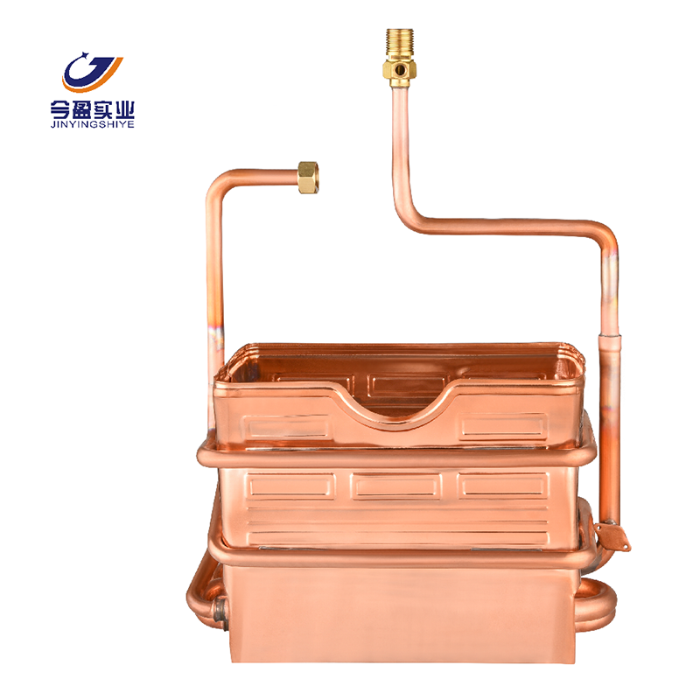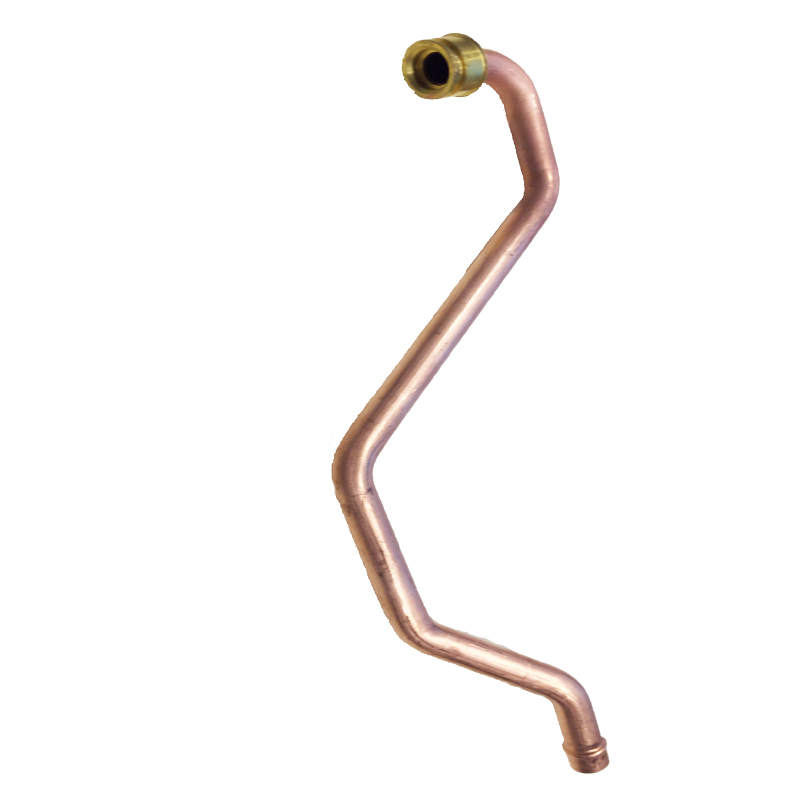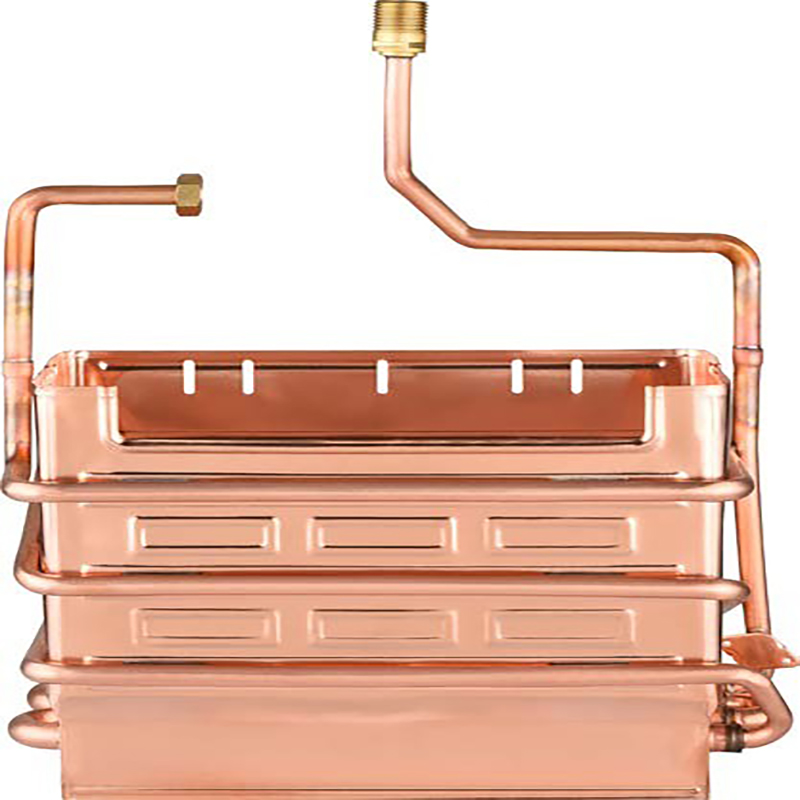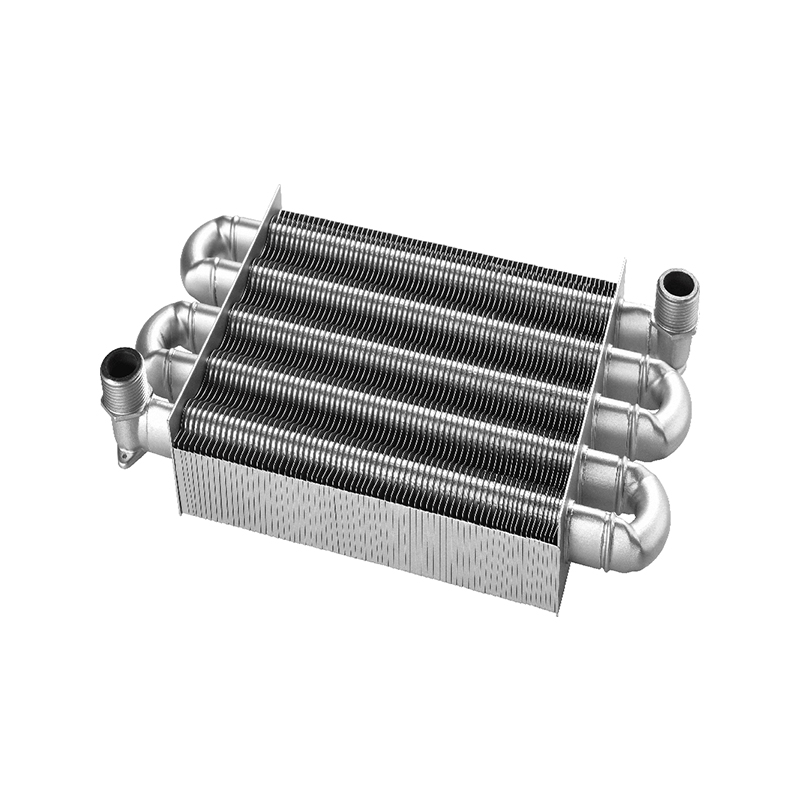In modern families, water heaters are almost an indispensable necessity in every household. High-quality gas water heaters, with their features of high efficiency,
stability and energy conservation, are deeply favored by consumers. Over time, some components of the gas water heater may age or malfunction, especially the heat exchanger.
As one of the core components of a gas water heater, the quality of the heat exchanger directly affects the heating efficiency and service life of the water heater.
The water heater parts and heat exchangers provided by Jinying come with a three-year warranty. How to replace the heat exchanger of a gas water heater?
Now, let's introduce some necessary knowledge and steps to everyone.

The function of a heat exchanger
The heat exchanger plays a crucial role in the gas water heater. Its main function is to convert gas or electrical energy into thermal energy and heat the water flow through heat exchange with water.
When water passes through the heat exchanger, the heat from the heat exchanger is transferred to the water, causing the water temperature to rise rapidly, thereby meeting the daily needs such as bathing.
If the heat exchanger malfunctions, the water heater may not be able to heat water normally, and even dangerous phenomena such as water leakage and gas leakage may occur.
Common causes of heat exchanger damage
1. Aging caused by long-term use: As the service life of the gas water heater increases, the metal materials in the heat exchanger will gradually age due to repeated heating and cooling,
resulting in a decrease in heat exchange efficiency.
2. Poor water quality: Mineral deposits in hard water may form scale inside the heat exchanger, which can affect heat transfer, causing the water heater to heat up slowly or even malfunction.
3. Improper operation: Frequent turning on and off of the gas water heater and prolonged high-temperature operation will accelerate the wear and tear of the heat exchanger and shorten its service life.
4. External environmental influence: Prolonged exposure to high-temperature and humid environments may cause corrosion or oxidation of the metal parts of the heat exchanger,
affecting the overall performance of the heat exchanger.
When does the heat exchanger need to be replaced?
When you find that your gas water heater has the following problems, it may be that the heat exchanger has malfunctioned and is worth checking and replacing
1. Slower heating speed: If the water heater heats water at a significantly slower rate and the amount of hot water is relatively small, it might be due to a decline in the efficiency of the heat exchanger.
2. Unstable water temperature: When using a water heater, if the water temperature fluctuates between hot and cold, it usually indicates a problem with the heat exchanger.
3. The water heater fails to heat up: After the water heater starts, there is no hot water output, and even a fault code is displayed. This is also a common sign of damage to the heat exchanger.
4. Unpleasant smell or scale: If there is an unpleasant smell in the water or severe scale accumulation inside the gas water heater,
it may be due to water quality issues that have caused blockage or damage to the heat exchanger.

If your water heater shows these symptoms, replacing the heat exchanger in time is an effective way to restore its normal function.
The necessity of replacing the heat exchanger
Compared with replacing the entire water heater, replacing the heat exchanger separately can not only save a considerable amount of money but also extend the service life of the existing water heater
to the greatest extent. The heat exchanger of Rinnai water heaters is made of high-quality materials and has strong durability. Under normal usage conditions,
the service life of the heat exchanger can reach 8 to 10 years. Due to the influence of various factors, heat exchangers are bound to malfunction or age.
Understanding how to replace the heat exchanger correctly can ensure that the water heater is restored to its best working condition.
How to replace the heat exchanger of a gas water heater?
Although replacing the heat exchanger is a highly technical operation, as long as the correct steps are followed, users with certain hands-on ability can complete it by themselves.
Below, we will introduce in detail the specific steps for replacing the heat exchanger of a gas water heater.
The required tools and preparations
Before replacing the heat exchanger, make sure the following tools and materials are ready
Screwdriver: Used for disassembling the outer shell and internal components of the gas water heater.
Wrench or pliers: used to loosen tight pipe connections.
New heat exchanger: Purchase an original heat exchanger that matches the model of your gas water heater.
Towels or absorbent cloths: Used for cleaning the installation area to prevent water leakage.
Electrical insulating tape: Used for insulation treatment of electrical parts.
Steps for replacing a heat exchanger
Disconnect the power supply and water source
Before performing any operation, it is necessary to first turn off the power supply of the water heater and the water inlet valve to ensure safety. If the water heater uses gas,
remember to cut off the gas supply to avoid leakage.
Disassemble the outer shell of the water heater
Use a screwdriver to remove the outer shell of the water heater to expose its internal structure. The disassembly methods for the outer shells of different models of water heaters vary slightly.
For specific details, please refer to the manual of the water heater.
Disassemble the connection between the water pipes and the air pipe
Remove the water pipes and air pipes connected to the heat exchanger. During the operation, pay attention to checking the sealing condition of the pipe joints to prevent secondary leakage.
Remove the old heat exchanger
Remove the bolts that fix the heat exchanger and take out the old heat exchanger. During the disassembly process, be careful not to damage other components,
especially the pipe interfaces connected to the heat exchanger.
Install a new heat exchanger
Install the new heat exchanger in place and make sure it is firmly connected to water pipes, air pipes, etc. Secure the screws of the heat exchanger to prevent them from loosening.
Reconnect the water pipe and the air pipe
Make sure all the pipes are correctly connected and securely fastened. Check whether there is any leakage in the pipe connection to avoid problems during subsequent use.
Detection function
Reconnect the power supply, turn on the water source, start the water heater for testing, and check the water temperature and the normal operation of the water heater.
If everything is normal, it indicates that the replacement operation has been completed.
Precautions after replacing the heat exchanger
Check water quality: After replacing the heat exchanger, regularly check the water quality to prevent the accumulation of scale from affecting the efficiency of the heat exchanger.
Regular maintenance: Regularly clean the interior of the water heater and check the operating status of the heat exchanger to prevent unnecessary malfunctions.
Timely maintenance: In case of any abnormal situation, contact professionals as soon as possible for inspection and repair to avoid greater losses caused by minor malfunctions.
By following the above steps, you can smoothly replace the heat exchanger of the Rinnai water heater. This not only restores the normal heating function of the water heater
but also extends its service life. Proper maintenance and repair will bring more convenience to your family in using hot water, save energy and reduce operating costs.
Conclusion: Replacing the heat exchanger is an important step in maintaining the normal operation of gas water heaters.
Mastering the correct operation method can not only ensure the performance of the water heater but also extend its service life




